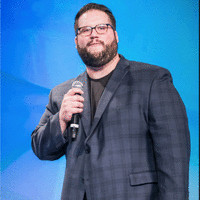
The way that we utilize data can make all of the difference when it comes to sales. It’s more important to make quality connections and have meaningful conversations with prospects than to contact a large quantity of prospects on a superficial level. Utilizing data in the right way can help you make those quality connections. … Read more
Episode 124: Using Video in your Sales Funnel – Daniel Crouch
Content creators know that video is a powerful tool for delivering a message, and that means that it can also be a powerful tool in the world of sales. Learning how to use video effectively can be a helpful skill in all parts of the funnel. Today’s guest is Daniel Crouch, Enterprise Account Executive at … Read more
Episode 123: The Key to Sales is Human Connection – David Fisher
If you work the top of the funnel, it’s easy to believe that you don’t need to build a deep rapport with your prospects. Once you get your foot in the door, your job is to hand them off to another representative, so building more than a superficial relationship may seem unnecessary. However, today’s guest … Read more
Episode 122: Generating Leads and Closing Sales – Peter Lang
The goal of the prospector is to generate good leads and close sales, and sometimes it’s worth seeking out options from someone who operates differently than the way that you do in order to improve your techniques. Today’s guest is Peter Lang, CEO and founder of the Uhuru Network Uhuru is a company that drives … Read more
Episode 121: Selling Effectively at the Executive Level – Steve Hall
When you want to know how to sell effectively at the executive level, you need expert training and stories that sell. Today’s guest has been called Australia’s leading Authority on “C” Level sales. Steve Hall has sold to executives in more than 20 countries. He is a writer and speaker who focuses on executive sales. … Read more
Episode 120: How to use Stories in Sales – Mike Adams
Everybody has a story. In fact, everybody has a number of different stories, and one way or another, most people wind up sharing their stories with other people at some point. Stories help us relate to others and make connections as well as illustrate important points. And if you work in sales, you can use … Read more
